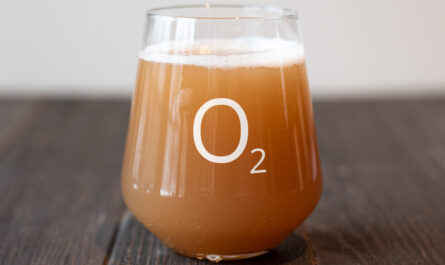When I first started homebrewing, recipe kits always encouraged 1-2 weeks in the primary fermenter followed by 1-2 weeks in the secondary fermenter. Getting your beer off the yeast cake at the bottom was a priority to reduce the risk of off-flavors that could potentially spoil your beer. Plus it’s believed your beer can benefit from clarifying further during secondary fermentation.
Autolysis
The biggest risk with extended primary time is a reaction called autolysis. Autolysis is when dead yeast cells rupture, releasing bad off-flavors into your beer. Well, the yeast cake harming your beer concern has definitely been overplayed. John Palmer suggests that beer can sit on a yeast cake for several months without running the risk of this. Assuming your fermentation conditions remain relatively steady and nothing crazy happens.
I sourced and compiled some data from various homebrew polls (155 homebrewers) to see what people were doing. I’m not surprised by the results at all.
Do You Use A Secondary Fermenter?

I took a brief hiatus from home brewing a few years ago and returned to the hobby with a single vessel fermenting strategy. 2-3 weeks of aging is simply not worth the risk of racking.
Here’s why you should probably just stick with single vessel fermenting:
- This is the most important reason. Every time you rack your beer you risk oxidation. Oxidation can ruin beer and introduce off-flavors resembling wet cardboard, sherry, or fruit. This is especially important for NEIPAs/IPAs. Oxidation destroys hop flavor and aroma, leaving you with a bitter beer bomb with no character.
- I dry hop freely (unbagged) right in the primary fermenter. Other additions like fruit can follow the same rule assuming you have space. If you’re fermenting in a glass carboy, fruit additions may be more difficult so you may have no choice but to transfer to a bucket. I would probably just upgrade to a stainless bucket fermenter if you’re plastic bucket averse.
- I’ve never aged a beer for several months personally, but numerous brewers have reported NO off-flavors associated with extended periods on the yeast cake. I can personally attest for 3+ weeks in the primary with no issues at all. If you plan on aging your beer for 4+ months, you may want to consider a secondary vessel to reduce the risk of autolysis.
- Cold crashing is going to take care of most if not all clarity issues in your beer. 2 weeks in the primary plus a 24-hour cold crash is going to produce very clear beer right away in most cases. Bottle/keg conditioning will also make very short work of clarifying your beer. Ultra-clear beer is just not something I personally care about anyway
- Leaving your beer on the yeast longer is only going to ensure fermentation fully finishes. One of my early mistakes was racking/bottling too early. Yeast produces several byproducts and off-flavors during fermentation. Aging will give the yeast ample time to clean up after itself, producing a cleaning tasting product. Taste a fermenting beer at 5 days then again at 10 days. What a difference.
- Less cleanup. This one is simple of course but less racking means less cleaning for you.
If you’re still new to homebrewing, I’d recommend you check out my tips for improving your homebrew.




